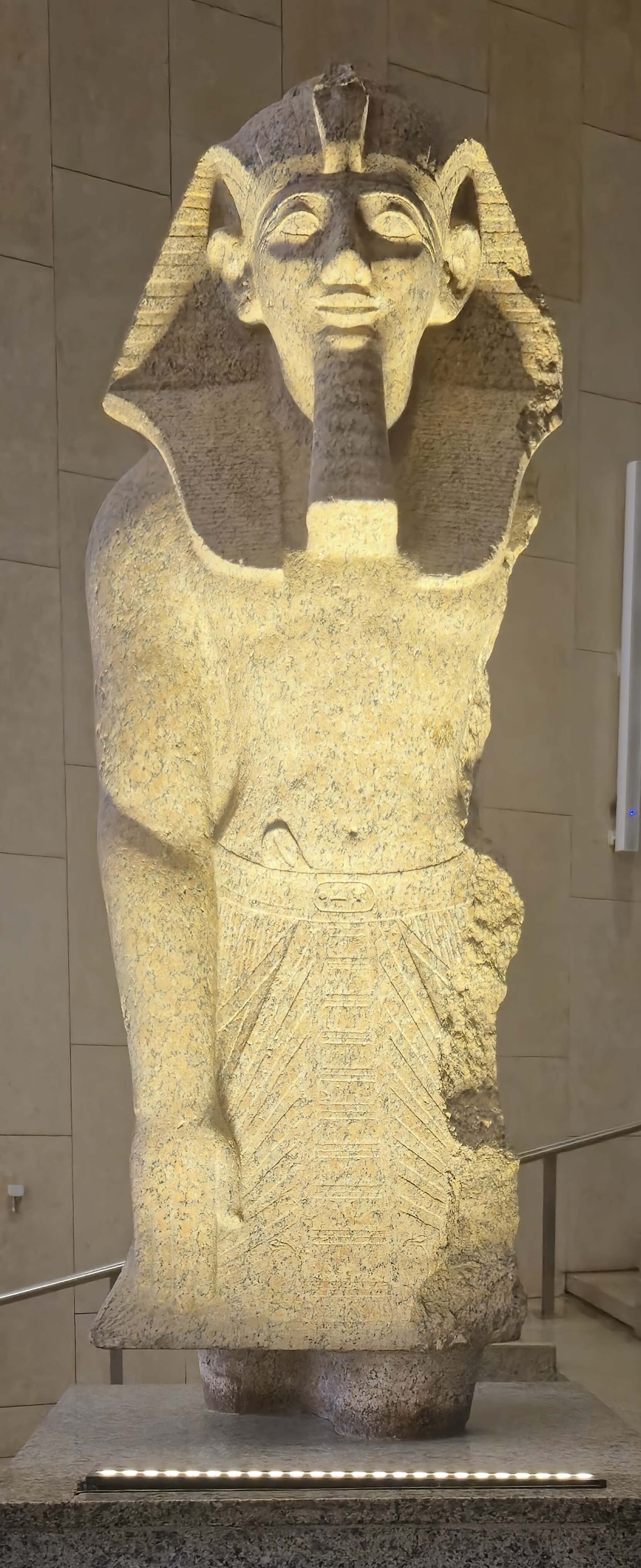
GEM 3771
Standing Statue of King Thutmose III
In the majestic precincts of Karnak Temple in Thebes, stands a remarkable representation of one of Egypt’s greatest warrior-kings: Thutmose III, ruler of the 18th Dynasty (c. 1479–1425 BCE). This standing statue presents the king in traditional pose—upright, formal, and commanding—adorned with the Nemes headdress, symbolic of divine kingship, and the shendyt kilt worn by pharaohs across dynasties.
The king’s hands rest flat against his thighs, with one leg slightly advanced in the timeless Egyptian walking pose, conveying both stillness and power. Despite the formal conventions, this statue contains nuanced features that offer deeper insight. The face, with its large almond-shaped eyes, subtle smile, and fine details, suggests a blend of strength and introspection. These characteristics bear resemblance to artistic traits associated with Queen Hatshepsut, leading scholars to consider that this statue may have originally depicted her before being appropriated by Thutmose III after her death.
The cartouche inscribed on the belt confirms the name of Thutmose III, yet some inconsistencies in facial style, proportion, and body detail hint at t ... Entdecken Sie mehr mit Premium!
Entsperren Sie die vollständige Geschichte dieses ArtefaktsWerden Sie Premium-Mitglied, um auf die vollständige Beschreibung, Audioguides und exklusive Inhalte aller Artefakte zuzugreifen.Erhalten Sie vollen Zugriff auf Audio und Beschreibung der wichtigsten Artefakte des GEM für nur 1,99 $
Suchen Sie ein weiteres Artefakt?